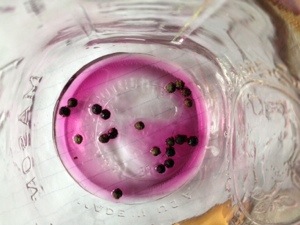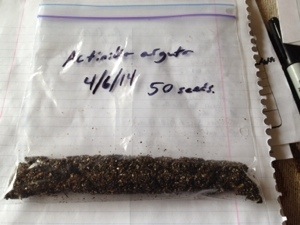In addition to the fruit trees and bushes we’ve been planting, I’ve also started some other plants, like honey locust, from seed this spring. Just the other day I did two batches of seeds.
One batch needed soaking prior to sowing, similar to the nitrogen fixing trees we started a few weeks ago, and consisted if sea buckthorn, red Malabar spinach, oca, pomegranate, astragalus, and salad mallow. I soaked them for a day or so, and then planted them in a flat of potting soil. Certain species require a soaking, which allows the seed to absorb water and makes the germination process quicker and more efficient.

Malabar spinach is a vining, tender perennial green that I am very excited to grow this year. It’s seeds gave off a great red color when soaked. I wonder if we could use it for a dye?
The other batch of seeds consisted of plants that require a period of cold before they can germinate, so for these I moistened either paper towels or peat moss, put this damp medium into a labeled ziploc, and then added seeds. These bags are now in the fridge, where they will cold stratify for 1-3 months before they can start germinating.
This batch included hardy kiwis, Turkish tree hazel, and cornelian cherry.
Most of these plants are perennials, and unlike most vegetables, are slightly peculiar in their germination habits. This is usually remedied by a quick google search, where any scarification or stratification information can be discovered. After that, it takes just a little more effort and time, and then your on your way to perennial abundance!
